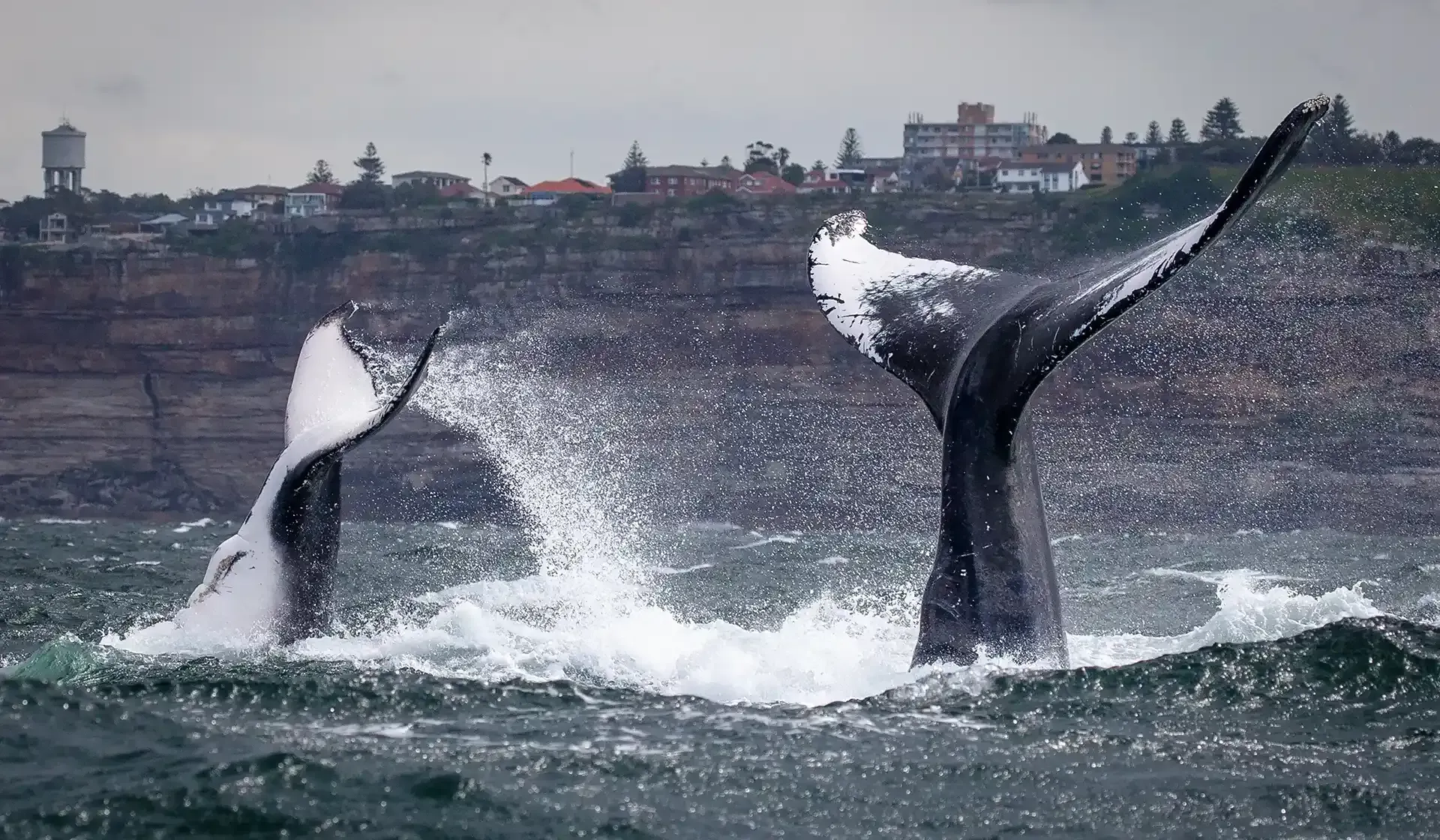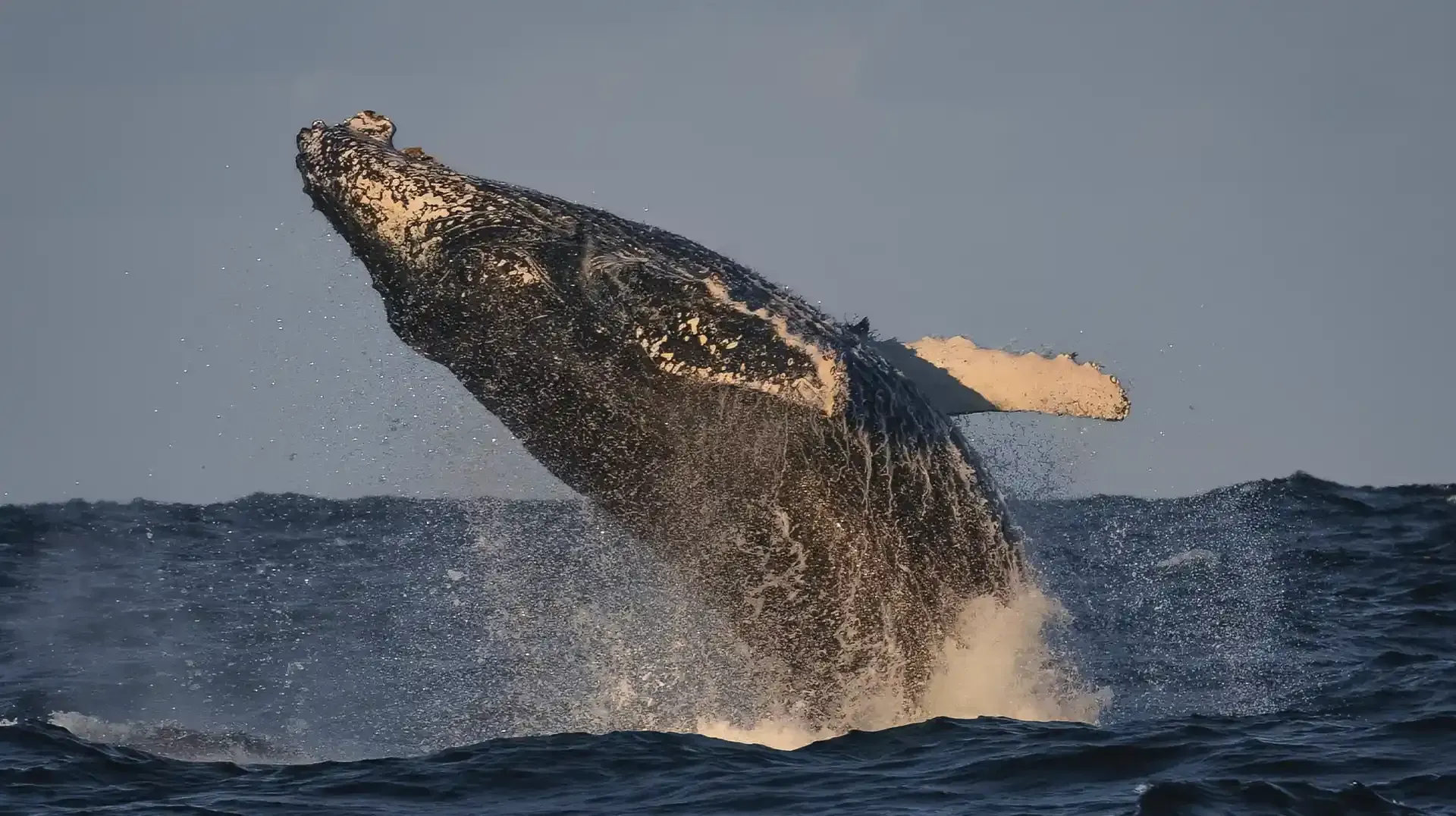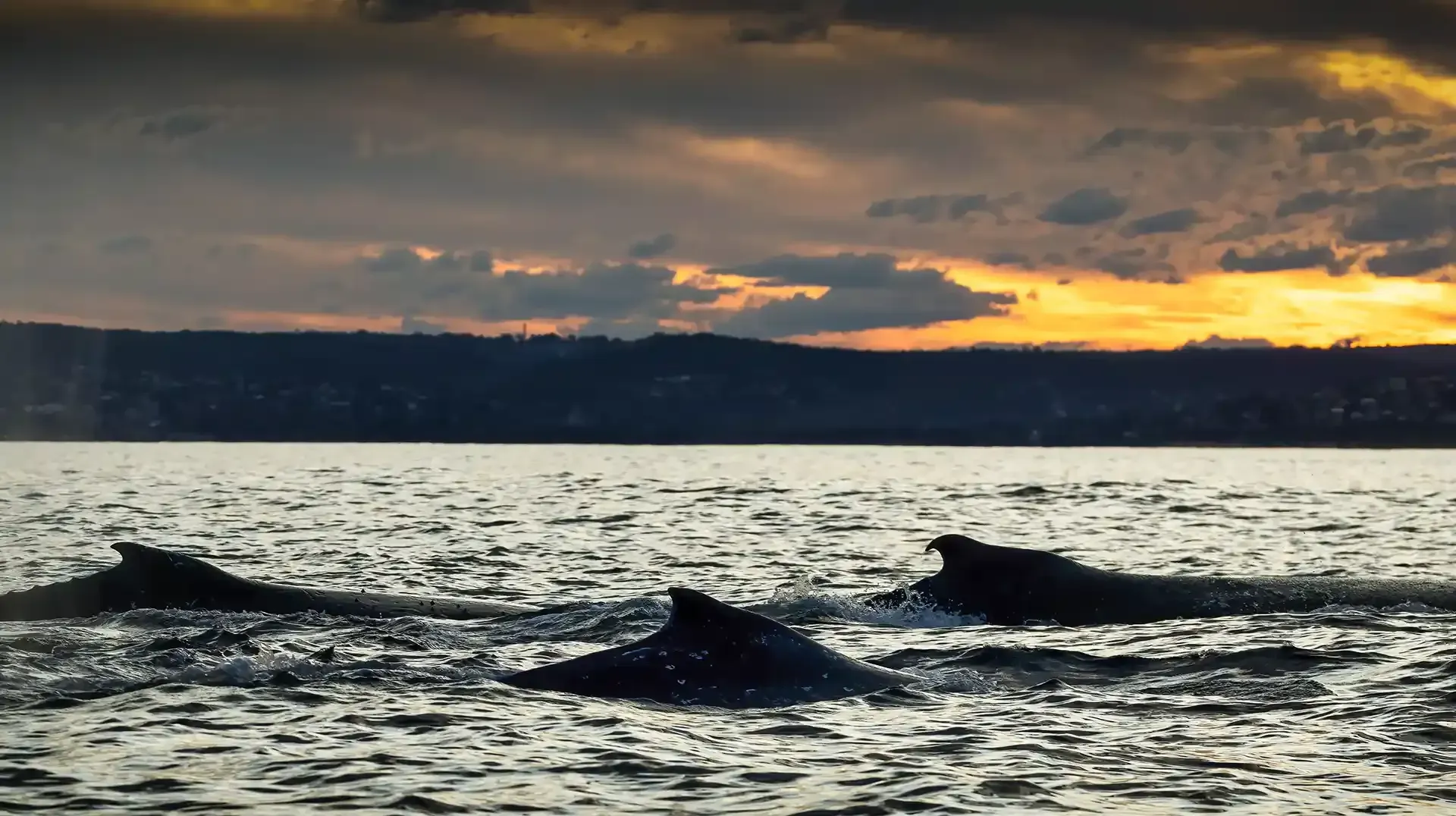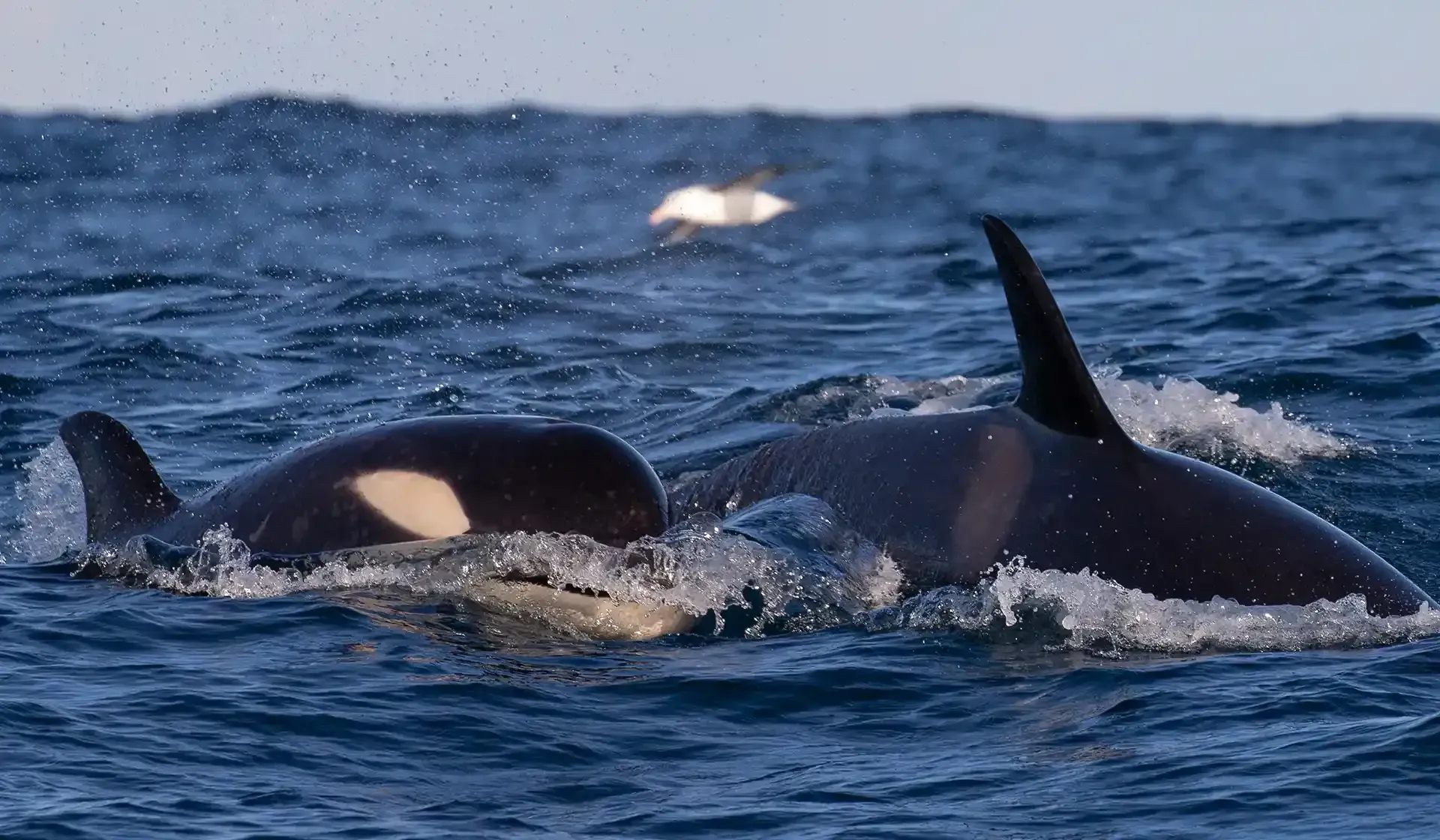G’day sailors,
Captain Simon jumping on board to chat all things Sydney whale migration. As the cool air of autumn arrives, eager whale spotters start gathering their gear, primarily binoculars and cameras, in preparation for the upcoming whale season. If you’re wondering when the best time is to go whale watching in Sydney, you're not alone. Each year, tens of thousands of humpback whales pass right by our coastline in one of the most spectacular migrations on Earth.
So, when do humpback whales arrive in Sydney? Let’s dive in.
Sydney's humpback whale migration
The stars of Sydney’s whale season are the majestic humpback whales (Megaptera novaeangliae). These giants of the deep migrate along Australia’s east coast twice a year, covering up to 10,000 kilometres on their annual round trip.
Northern migration (May to August)
This is when humpbacks head north from Antarctica to the warm, tropical waters of Queensland to breed and give birth. With healthy fat reserves from their summer feast in Antarctica, they’re full of energy and we tend to see a great range of humpback acrobatics in Sydney in early season. You’ll mostly see adult whales during this phase – particularly juvenile males, newly mature adults, and occasionally competitive groups of males vying for a mate. In August, you’ll see whales heading both north and south as the frontrunners and latecomers pass each other on the Humpback Highway.
Southern migration (September to November)
This is the return leg south to Antarctica. It's slower-paced and closer to land, especially for mothers with young calves. You’re more likely to see calves engage in playful surface behaviours like breaching and tail slapping, as they practice their moves and build strength. This is also when larger pods or family groups become more common.


Whales don't check the calendar
While the general timing of the humpback migration is fairly predictable, whales don’t follow a strict schedule. Ocean conditions, climate patterns, and even the timing of ice melt and krill blooms in Antarctica can all influence when they start moving.
Some years, whales have been spotted migrating as early as April or lingering into December. The East Australian Current, sea surface temperatures, and shifts in wind patterns can all subtly nudge the timing of the migration earlier or later. That’s why whale watchers often say: expect the unexpected – and keep your eyes on the horizon throughout the full season.
In general, Sydney’s whale season is getting busier each year as humpback whale numbers continue to recover following Australia’s ban on whaling in 1979. Great news for whale lovers and those wanting to spot these beautiful animals in the wild on a whale cruise!
Why do humpback whales migrate?
The humpback whale migration is one of the longest of any mammal on Earth. They spend the summer months feeding on krill in Antarctic waters, building up thick blubber reserves to sustain them through the long journey north.
In winter, they head north to the tropics of Queensland to mate and give birth in warmer, safer waters. Their Antarctic krill buffet is thousands of kilometres away, so they rely almost entirely on fat reserves until they return south.
Remarkably, whales navigate this migration without GPS – relying on environmental cues like the Earth’s magnetic field, ocean temperatures, and even solar positioning. This behaviour is learned and culturally passed down, meaning calves follow routes taught to them by their mothers. Humpback whales have an average lifespan of 40-100 years, meaning that a single humpback whale may visit Sydney up to 200 times throughout its lifetime!


Do other whale species migrate?
While humpbacks steal the show, they’re not the only visitors during whale season. Endangered southern right whales (Eubalaena australis) appear in winter (June–August), sometimes close to shore and even within Sydney Harbour. They move slowly and rest in sheltered bays. Minke whales may migrate through in winter, though they’re elusive and can be hard to spot. Orcas (killer whales), Bryde’s whales, sei whales, and even blue whales are rarely seen but can occasionally pass by Sydney, especially during late winter. In August 2024, a huge orca pod was sighted chasing humpback whales off Curl Curl Beach in Sydney!
When is the best time to go whale watching in Sydney?
If you’re keen to see big pods and dramatic surface behaviour, head out in May, June and July. This is when the whales are fat from their summer feeding and full of exuberance. You might also get treated to one of Sydney’s spectacular winter light shows on one of our sunset cruises. If you join us in August, you’re likely to see two-way traffic as whales head both north and south during mid-season. For adorable moments with mothers and calves, September, October and November are ideal. Whilst you can spot whales from Sydney’s cliffs and headlands, nothing beats being out on the water and being in the thick of the action!
At Go Whale Watching Sydney, we offer front-row seats to the migration. Our experienced crew and purpose-built whale watching vessels are the best in Sydney, with expert commentary, guaranteed whale sightings (or your next cruise is free!), and memories that will last a lifetime. Book your cruise today and experience the wonder of Sydney whale watching season!
Keep your eyes on the horizon,


